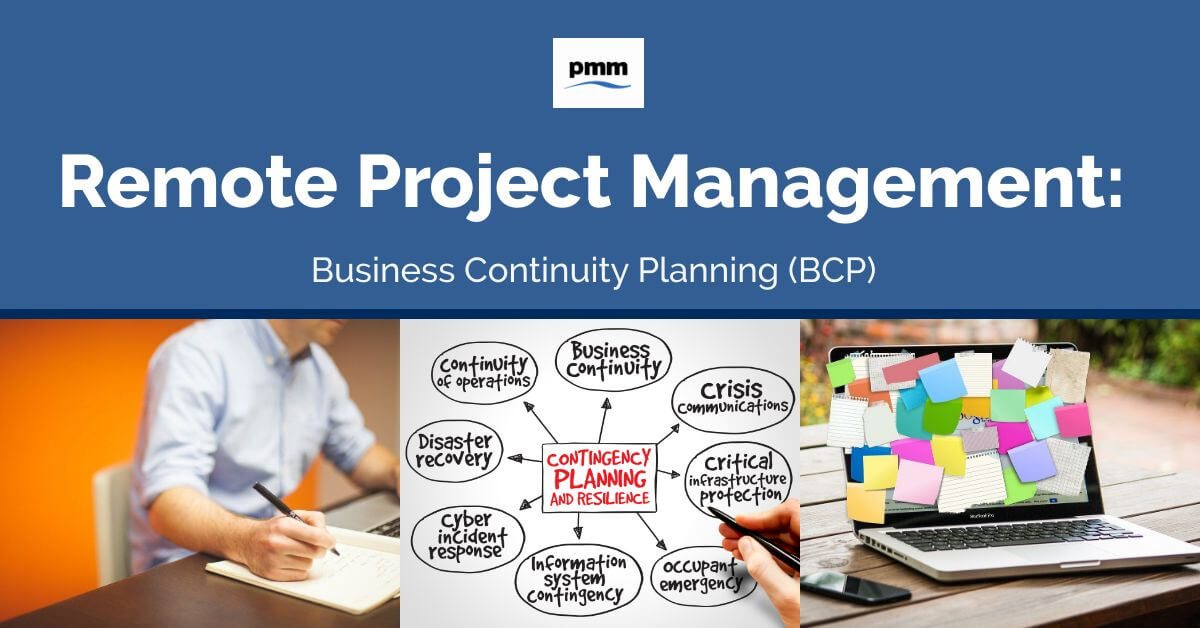Whilst working remotely is part of many business continuity plans, when you’re managing a fully remote project there are different considerations. A remote project’s business continuity plan will look different in many ways.
It’s vital to have a plan for business continuity to ensure the integrity and resilience of the work that you’re doing. As you plan your remote project, resilience needs to be baked in at an earlier stage.
In this article, we’ll cover:
- The overarching technical and security concerns
- How to start to build your business continuity plan
- Making sure you’re able to maintain your project integrity long-term
To ensure that your project has planned for the worst and can still achieve its end goal.
How remote working makes continuity different
Having full control over your data setup is one of the things that can make a business reluctant to go fully remote. A remote team will have an array of different hardware that all needs to be compatible with your systems and be able to log in to your remote servers.
Rather than a wired connection in office, remote working introduces a potential security issue with the potential for public internet connection being used or home router issues.
Because your data is going to be handled differently and accessed through a range of terminals, you need to build this into your plans and policies. Some important considerations to include will be:
- Ensuring all users maintain a data connection with servers, even when not actively in use whilst working
- Turning on auto-sync functions for cloud storage when necessary
- Checking through your data and appropriate use policies to make sure they are relevant for remote workers
Creating and adapting your business continuity plan
The general structure of your business continuity plan will remain the same – you’re creating a plan to ensure your project can continue, no matter what may happen. You need to plan for issues as diverse as:
- Cyberattacks
- Energy use restrictions
- Natural disasters
- Fire and flood
All of which will need to be managed differently with a geographically distributed team.
First, you’ll need to identify the critical people, hardware, and software that’s needed to keep the project running. As well as whichever project specific software you use, any scheduling or communication software will need to be taken into account too.
Once you know what and who’s needed to keep the project running, you need to convene a crisis team. These people will be in charge of managing elements of the plan.
Without a physical presence being possible, a key factor in the team will be how to get in touch with each other. Having a chat group solely for continuity purposes is a good idea.
Making your business continuity plan future-proof
A remote team will have more potential vulnerabilities so you should be working through your continuity plan more regularly. Once you’ve got the plan in place, it needs to be tested. This can be done with a virtual run through, with different team members offering feedback, or live testing if it’s possible.
The locations, contact details, and hardware of your team is going to be more fluid. This needs to be accounted for with proper policy and process to capture new phone numbers or laptop serial numbers for example.
Storing your plans needs to be considered too. Printed manuals might once have been a useful contingency in the event of server failure, but in a remote team having your processes stored on a thumb drive or an alternate cloud storage system would be a modern equivalent.
Conclusion
Your business continuity planning for a remote project will be different mainly in how often it changes. The team you work with are likely to use new devices frequently, move about more, and there will be different connections to your server to contend with.
As well as the technical aspects, having people located in different parts of the country or world means different challenges to understand. Be prepared from the outset and have robust processes in place to mitigate problems and maintain resilience will ensure your project works well no matter the challenge.






